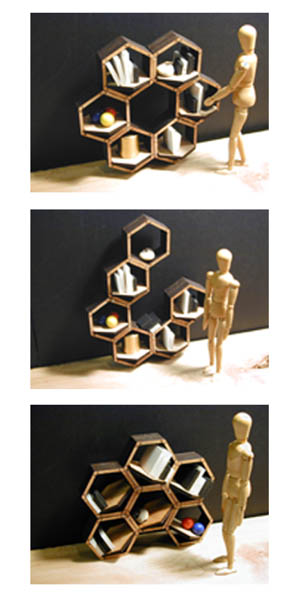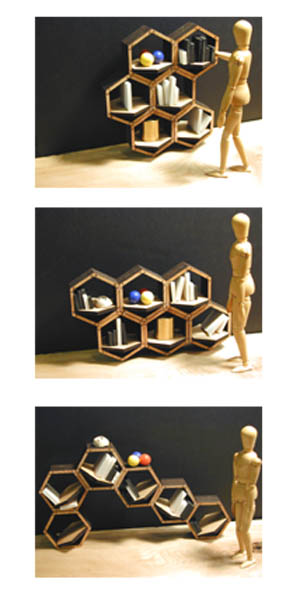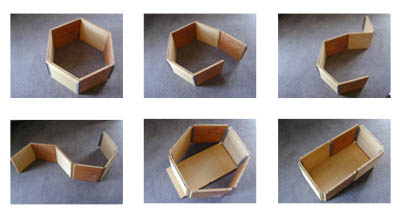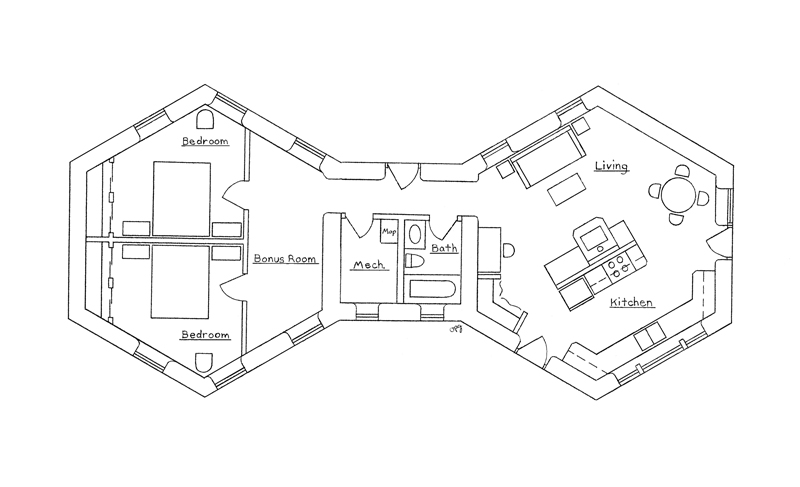1)
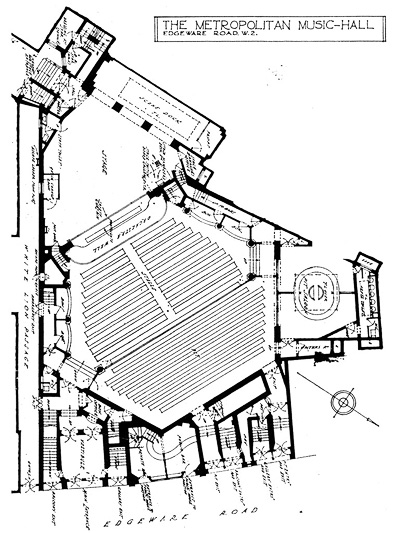
The Edgware Road Music Hall was a masterpiece of planning with segregated circulation systems for stalls and pit and not an inch of wasted space anywhere.
2)


Kempthorne's 1835 "hexagonal" plan in perspective. - Peter Higginbotham
Kempthorne's hexagonal or "Y-plan"design was essentially a variation of the square plan, with three radiating wings rather than four, and with a hexagonal central hub and perimeter.
3)





Hexagonal home plans
Wide windows span the front, and a rambling deck wraps around the rear of this linked trio of hexagonal units in this Contemporary home plan. Bright and open gathering spaces fill the central hexagon, while bedrooms and bathrooms are in the right-hand section. The third holds a two-car garage with a workbench and plenty of storage.
4)





Hexagonal home plans
This handsome hexagonal home plan is aptly named. It offers panoramic views from all of the rear rooms, plus the wide upper deck and covered lower patio. A double-wide stone chimney vents two fireplaces: a two-sided fireplace on the main floor, and a standard fireplace in the spacious family room below.
5)


6)

7)

Upper Floor Plan
The flat portion of the roof continues around the perimeter of the house and extends into the interior to form soffits. The sloped standing-seam metal roof sits on top of the flat roof and forms clerestories at the gabled ends.

Main Floor Plan

Lower Floor Plan
A large 10 foot high retaining wall was all that remained of the previous home after it burned, and this was incorporated in the design as shown on the lower level plan; it is the only wall not built on the hexagonal pattern.
8)
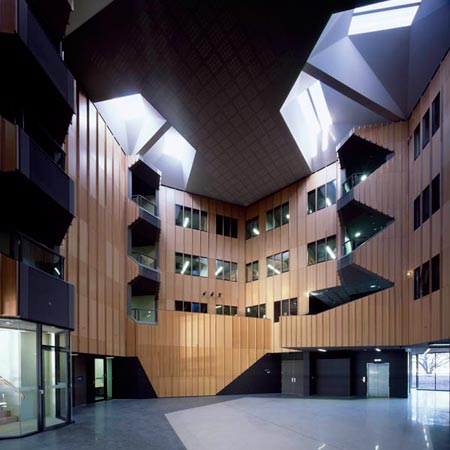
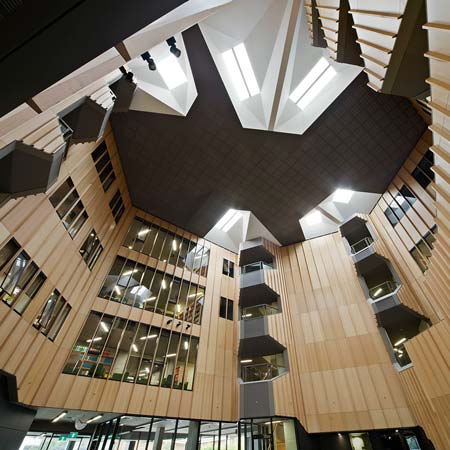
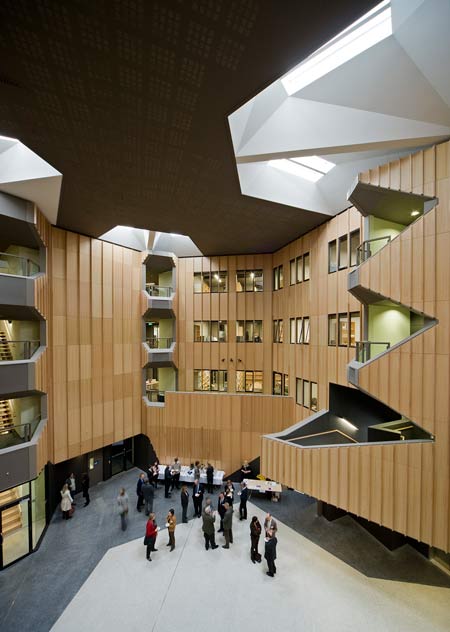
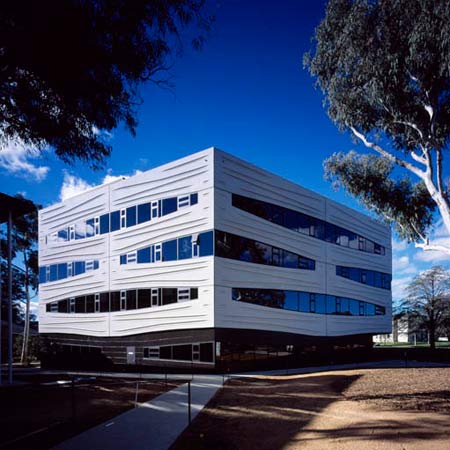
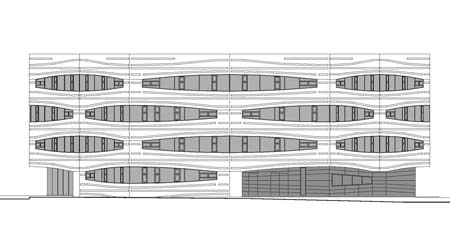
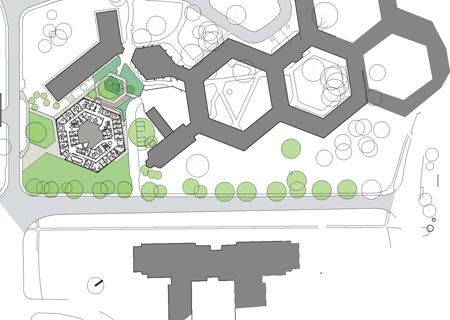
Hedley Bull Centre for World Politics - Lyons Architects
Melbourne architectural and urban design practice Lyons have completed a new research centre at the Australian National University in Canberra, Australia.
As an object in-the-round, the building marks its prominent street corner. The form is cut through on the principle facade, connecting inside and outside and giving views to the surrounding Canberra hills.
9)

10)


OMA in Singapore
"Office for Metropolitan Architecture has announced a large residential complex containing over 1000 apartments in Singapore.
"The project will comprise 32 apartment blocks, each six stories tall, stacked in hexagonal
arrangements. The announcement follows OMA's appointment last year to design a 36-storey residential tower in Singapore."
11)


Vertical City Filled with Hexagon houses
Tay Yee Wei, the Malaysian architect publishing a towering vertical city design filled with hexagonal housing units recently. That unique design offer a solution to urban population growth problems in Asian cities.

The tower itself only serves as a scaffolding. As the population of urban areas fluctuates, modular units can be "plugged in or out"to the structure to accommodate an expanding population.

This vertical city Development was inspired by Le Corbusier's theory "a house is a machine for living". This development project essentially rotates a sprawling community into a vertical orientation. The city puts down the initial costs and retains ownership of the primary structure, which is made of reinforced concrete.

from http://www.architecture-view.com/2010/09/22/fascinating-vertical-city-filled-with-hexagonal-housing-units/vertical-city-filled-hexagon-houses/
12)

Bulwark





